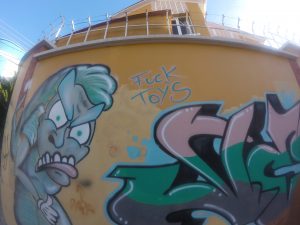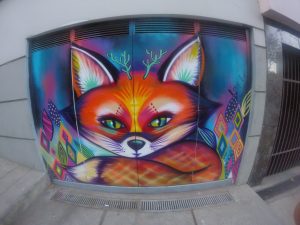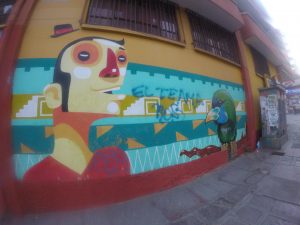
Sucre 2016
Within the confines of this paper I will attempt to encompass the majesty, artistry and social implications of graffiti in Latin America. To make things a bit easier (and for times’ sake) I will focus more deeply on the implications of graffiti in Bolivia. Within the lens of post colonial framework and reference. And, how censorship played a role in the prolific political nature of many pieces in question. Demonstrating that since the time of the civil war, non-indigenous parliament and contact with new religious influences; how has the correlation of all of these forces translated into the art and internal unrest amongst people. Capturing the succession of graffiti since contact and more popularized in mass media. I will also offer original photographs I have taken in various places in Peru and Bolivia. I would like to compare and contrast the colour, shape, and archetypes used in political messages in Bolivian graffiti. The presentation will largely be images and observing particular pieces. While also offering insight from a historical stand point the utility of graffiti in post colonial worlds. Re: who is in power in my ancestral land? And, why is this the only place I can express myself and the unrest I feel? These questions are the ones I have in my research. As well as, how are the people who encompass this work are sometimes like authors of the socio-political reality and window into a much deeper truth. The subtitles of this work is reflective of a much older narrative and cosmology hidden in the strokes and pigments alive in this work. And, the souls behind this work and what it represents on a community scale to see unrest expressed through throwing paint on walls. Isn’t this what we have always done? And, is there something elegant about some of it? Is there a utility to graffiti that for whatever reason we have disregarded as something to look down upon? And, is there an opportunity for cultural revival through this work? What are the implications of this medium on a long term scale? All of these questions to say, I believe graffiti can be informative to socioeconomic and political feelings of the common or the working class. As well something that brings immense community pride and communication to all members.

Sucre 2016

Sucre 2016
Palmer, L. M. (2017). Rhizomatic Writings on the Wall: Graffiti and Street Art in Cochabamba, Bolivia, as Nomadic Visual Politics. International journal of communication [Online], 3655+. https://link.gale.com/apps/doc/A534020740/LitRC?u=ubcolumbia&sid=LitRC&xid=ca90e5ea